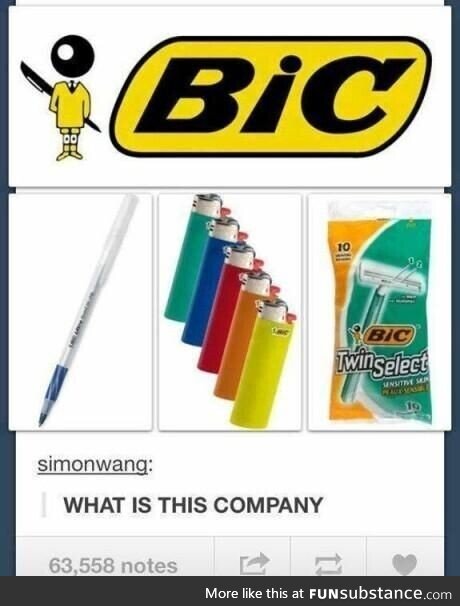Featured Posts

I wish I had a fort

The powerof positive thinking

NASA

Pray for Australia

Take care of each other

She has emerged

My soul feels so much better

I just ordered one. #Just2019HispanicThings

He really wanted his photo at the Halloween party, but was super scared of the spiders

The Only Thing More Contagious Than COVID19 Might Be This Fox's Smile
About
FAQ
Contact
Rules
Terms
Privacy
Feedback
Keyboard Shortcuts:
Previous Post · Next Post · + CTRL Skip Post
Previous Post · Next Post · + CTRL Skip Post
© 2025 FunSubstance · funny and entertaining pictures, memes, gifs & videos.



The ballpoint pen had been patented over 60 years before that but was expensive and had flaws. Enter a couple brothers in Budapest on the run from the Nazis who ended up in Argentina and patented the capillary action ballpoint pen. Stateside Milton Reynolds caught on to ballpoint pen fever and figured people would buy in. The pens hadn’t made it into the US market yet but the brothers capillary action pen was under patent so Reynolds used a gravity feed design that had problems but was still novel and had potential. The problem being that in the late 1940’s his pens cost just shy of $200 each (adjusted to todays dollars) and were sold at high end department stores. People did buy them, huge crowds rushed in when they first went on sale.
So Bich does alright for himself and catches on to the whole ballpoint pen thing and figures out some ways to improve the pens. He buys up the patterns from our brothers in Argentina for the superior capillarity design pens and he starts selling Bic ball point pens for like 23 cents- so of course they blow up and of course the ball point pen becomes a household item.
He starts distribution in the US.
Now fast forward about 20 years. Disposable lighters weren’t really a thing as we know them until the 60’s. DuPont is making them
In… France. The Cricket. Well, Gillette, yeah, the razor guys, who also used to own paper mate (we’ll come back to that) buy cricket for the US and start selling disposable lighters.
Gillette made razors and is credited as inventing the consumer disposable “safety razor,” the early version of the plastic razors most of us are familiar with. While they seem dissimilar, a lot of the concepts and supply chains and knowledge cross over. Razors are plastic and metal, lighters, pens. Chemicals in a tube, precision tolerances with a margin, disposable, small, sold at your general goods and housefuls stores and such so the supply chain and relationships are already there on the retail side. Ok.
Gillette has some internal shakeups and such and there is some tussling going into this period. When the dust settles Gillettes new management reinvests in the advertising the previous managers cut and so there is back and forth a bit. Going into the 1980’s Gillette had introduced a line of pens cheaper than Bics staple Cristal pen brand and consumers buy especially bulk buyers like governments and businesses noticed. Gillette started to be the pen guys.
Each company had started with a different core product- Gillette made razors and Bic made pens. Each had diversified into various fields because the economy was booming, conditions were right, there were overlaps in small mass produced personal consumer goods they could leverage, those products were in demand and innovative with little or no overwhelmingly dominant players or market saturation, and it was generally smart. Gillette made razors through two world wars and war time business booms. They’d also seen that things like the Great Depression could effectively gobble the razor market. When people aren’t working, aren’t going out, shaving is low on the list.
For Bic specifically there is and were strong arguments that they were at least in part motivated by spite at Gillette encroaching on their niche and so they responded in mind in a way that made business sense for lucrative markets and diversification. even if that isn’t true it certainly makes sense to try and prevent a competitor from pushing you out of your market. Arguably if Bic hadn’t responded in such a way to capture business from Gillette and somewhat balance things out, Gillette in theory could have grown across its segments to a point where they could leverage far more resources in the pen space than Bic and could potentially have pushed Bic off of shelves or even bought Bic out.
Bic as a company was just very good at finding ways to make products at competitive prices in lucrative markets with room to grow. They had good marketing and brand recognition and perhaps a little bit of a grudge and that’s more or less the not entirely accurate or comprehensive but reasonably close story.